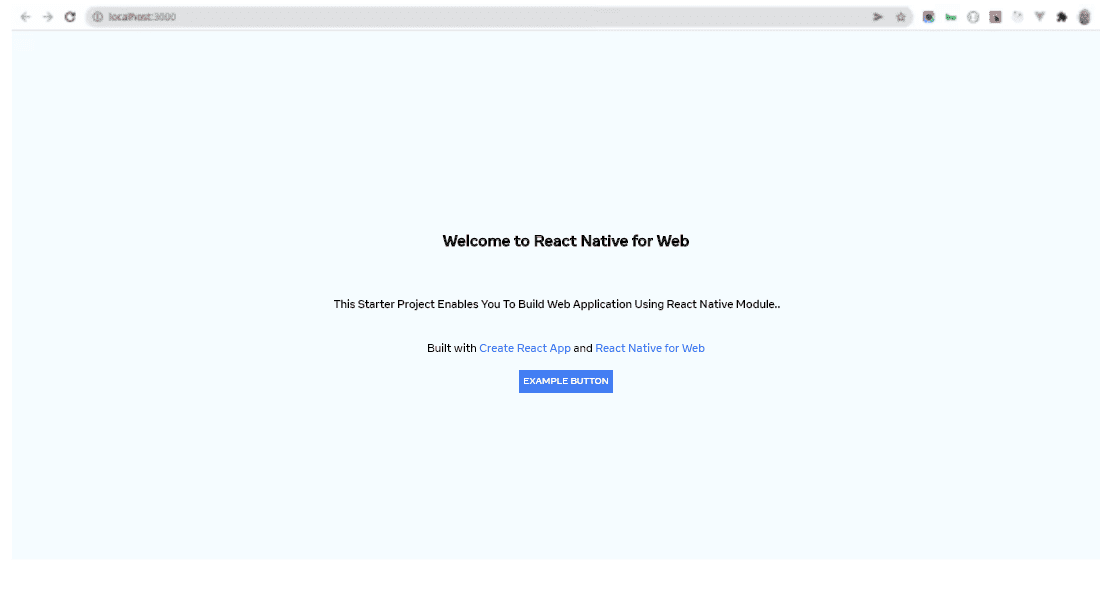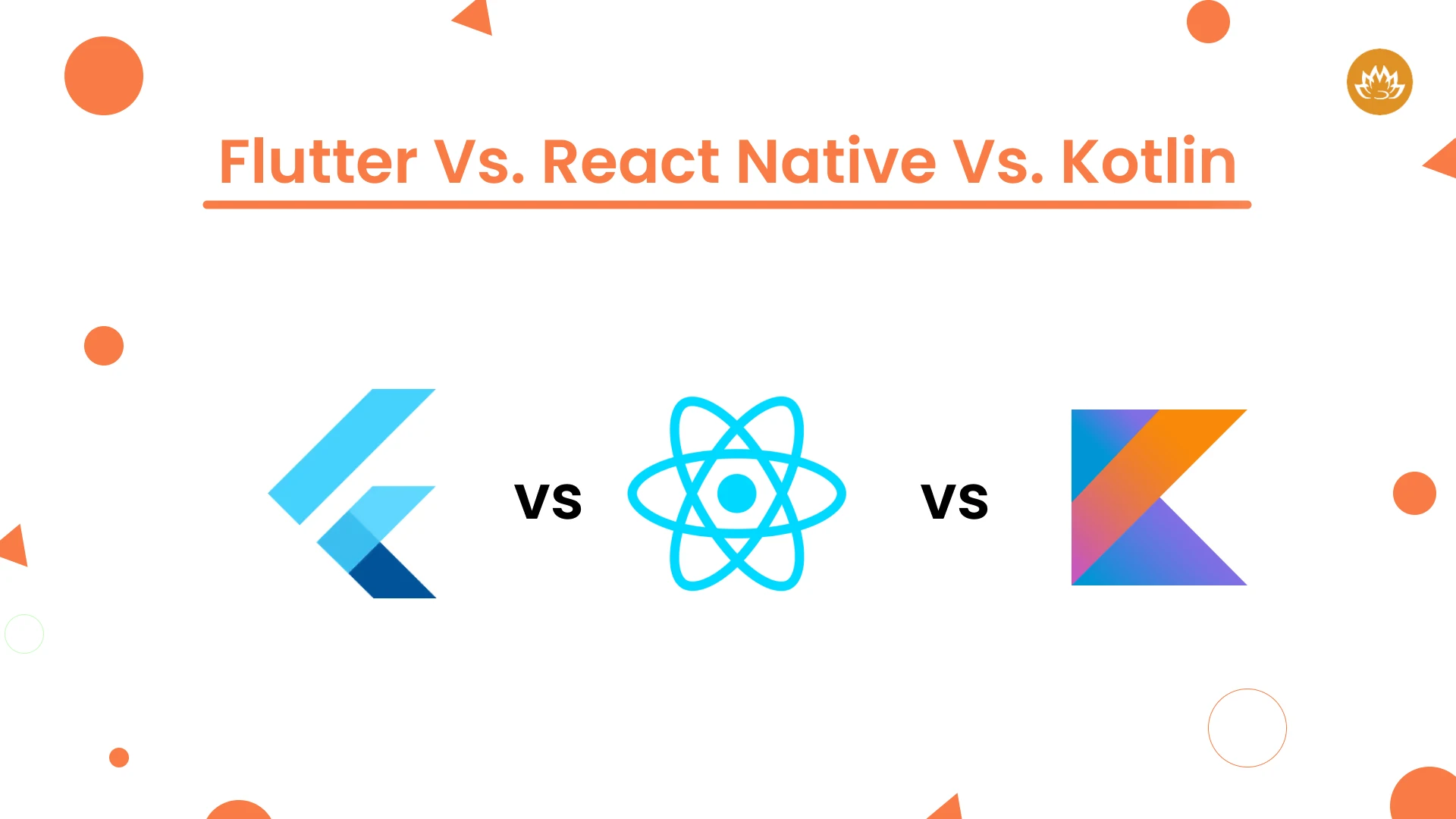When starting with a new project, have you ever got puzzled about deciding the right tech stack? It is a crucial phase just like the way you carefully choose your target audience and the platform they spend time on. And yes, how can we forget that there can be chances of requiring to change the user interaction methods in the future with the changing trends? In that sense, consider that the chosen tech stack must be adaptable to meet future needs.
Well, React Native is the best choice then. You don’t need to look back and think twice in this case. This is because programmers are given complete access to implement React Native components and APIs in web application development. In addition, React Native at present is a famous technology among developers as it can create exceptional cross-platform web and mobile applications. A lot of popular apps have been built with React Native so far. A well-established React Native Development Company can only make this possible because they have the top expertise and rich talent resources.
The short article explores the real buzz around the React Native technology used for web application development nowadays. So let’s dive into it.
What is React Native Web?
React Native for the web can be used for existing React Native apps, new apps, or any web-based or cross-platform apps. Just make sure you collaborate with the best React Native development company. You can hire a React native developer who is well-experienced and has sound technical knowledge about how to correspond between the React DOM and React Native framework. With the same JavaScript code, React DOM components can provide native experiences to your web project.
Further, a web browser remains supportive of React Native components. The view compilation into web development promotes seamless view in any web browser. Further, the same process is used to render views. However, a small challenge exists here. Some native components may not be made browser-compatible, needing extra mobile-centric features to give further access.
The best thing about React Native is it can now be used to create robust React Native apps that can natively operate on Android and iOS and any web browser. React Native employs standard APIs for UI like View and Text. Hence, React Native for the Web closes many gaps that arise by employing React. It is specially designed to help create cross-platform web and mobile applications through a single code base.
How Does React-Native Browser Work?
Web applications are built with a specific set of infrastructure. Like macOS and Windows have different APIs for performing the same tasks. The framework that helps close this gap will take away the APIs from one platform to create an analogous set of functions on the other. React native for the web can do this with great skill. The web browser can get access to various similar React Native components through React Native for the web.
If View is used to render views in React Native mobile, you can use a browser-friendly version in React native for the web. However, remember that all native components cannot be rendered browser-friendly. Some APIs are specially created for specific mobile-centric features only. You cannot access it inside any other web browser. Hence, developers have limited ways to use React Native for the web to convert the web version into a fully functional app.
Furthermore, React Native depends on CSS-in-JS for presentational components. It uses this method to get similar sets of styles rendered on mobile and the web in the right manner.
What are the fundamentals of React Native for Web?

1. Modern React
There is a systematic set of APIs just like functional components and hooks that are used for React Native for Web. As it is built on React DOM, there are DOM applications that slowly migrate to the new framework. This process will continue to change and happen with React whenever new APIs like Server Components or Concurrent Mode are introduced. The final objective is to offer better compatibility with React choices.
2. Modern Web
React Native uses native DOM APIs for the web to execute a particular set of features. With the evolving web platform, you also need to keep up with the pace, prioritizing React Native for web. There are a few projects where APIs don’t change from the day they are created and their implementations might have also been reduced. This is possible because these projects then switch to newer DOM APIs to get wide adoption and browser availability.
3. React Native Web Components
React Native for the web covers the core features. It uses the primary tools like View, Image, TextInput, Text, and ScrollView. The main actions are interactional tools performing gesture responder systems. Also, you can try doing this on some sample projects and then try modifying, further including in your documentation for each component. Many modules for React Native for web cover several use cases. It all depends on the app’s needs corresponding to the availability of several components.
4. Web-based React Native Apps
React Native for web UI elements is powered with JavaScript and further translation into native CSS. With this feature, developers do not need to learn domain-specific styling language or they are not required to employ supplementary tools, analyzing HTML for removing unused styles. Also, they create efficient CSS for use in production environments.
5. Expo
Expo is used to run React Native for the web. It is highly compatible and can be customized after installation and launch. Expo can also provide commendable user experiences for its browser. It is built upon the concept of writing code only once, thereby improving compatibility with diverse operating systems.
6. Development Experiences
Expo kit also comes with many benefits such as advancement and hot reloading. However, if you are from an HTML background and are not very experienced, you can learn to change the styles with React Native for the web.
7. Styling
This is an incredible component named Style-wise is way too different from its native counterpart. It is used for special web-based formatting and also for generating conditional formatting.
8. Navigation
React Native for web interface is simple and seamless. It has the most famous react-native navigation libraries. These libraries now also smartly work with react native on the web.
9. Positive Community Reaction
Since React Native for web is a new concept, it does not have such a big size of community. However, the best part is you get an array of resources that assist you on the web. Several popular companies support here in assisting and helping you learn and implement all the tactics of react-native-web.
10. Reliable and Original
React Native for the web undergoes rigorous testing and unit as well as production level. Once the canary releases to prevent regressions and take care of the partners’ feedback, there are significant enhancements on the way. Changes done to every compressed library module file size get tracked in pull requests.
Benefits of React Native For Web
-
React Native for the web has equal capabilities just like React Native. It facilitates programmers in developing accessible apps through tools like accessibilityLabel and accessibilityRole.
-
Performs platform-aware execution related to web-specific programs. Platform identification is important as it is not possible to rely on APIs every time. It helps when you want to only run compatible codes that are needed in the present platform.
-
Supports server rendering by using AppRegistry. Also with hard-coding the HTML document string, you can employ it to render the application
-
You can start a single Expo project and further launch on the web, iOS, Android, and desktop using Expo Web.
-
Progressive Web Apps gets supported by Expo Web
Who Can Use React Native For Web?
Those who want to quickly and effortlessly convert a native application into a web application must use React Native for web. Further, it is a great choice to interchange web apps and native apps at different platforms. To be precise, if you want your web app to imitate native app functionality, choose React Native for web. If you want to add more capabilities that aren’t standard in mobile or native apps to online projects, React Native for web is the best choice. If not anything above, then go for other better options.
Ready to take your project to new heights?
Our expert React Native developers are here to turn your vision into reality at lightning speed. Elevate your business with us today.
How To Create a Web App With React Native
The process of creating a web app with React Native is simple and not very time-consuming. At the onset, a React Native web application can be created in two different ways
-
1.Expo
-
2.Creating a React App
Use the following steps:
// initialize project with npm
npx expo-cli init your-app-name
cd my-app
// install react-dom and react-native-web
npm install react-dom react-native-web
npx expo-cli start
The other way to initiate your React Native web application is by using create-react-app command:
// initialize create-react-app project
npx create-react-app your-app-name
cd my-app
// install react-dom and react-native-web
npm install react-native-web
npm start
After creating React Native application, use the next step to prepare for the web:
// initilaize project
npx create-react-app
The latest CRA package with the npx command will give no trouble with local management by installing it globally.
// change directory
cd
// install dependencies
npm i react-native-web
Next comes registering application in React Native registry https://reactnative.dev/docs/appregistry. Also, if you use expo-cli command, then just omit this step:
import { AppRegistry } from "react-native";
import App from "./App";
AppRegistry.registerComponent("App", () => App);
AppRegistry.runApplication("App", {
rootTag: document.getElementById("root")
});
Within the app component, you can replace its code by adding custom boilerplate code. And then finally you can run the command to test the app.
Npm start
The result will be:

Hire React Native Developers to Create The Best Project
Knowing the basics about how to create React Native for web can help you understand the kind of expertise and in-depth knowledge you need to develop exceptional web applications. It can be anything from developing a mobile app, or web app to building a cross-platform app. React Native has always remained a valuable asset for everything. React can help you effortlessly build dynamic web apps and mobile apps. Choosing React Native for the web for your project is completely your choice. However, its popularity proves that it has vast potential and performs seamlessly. Hire a suitable React Native Development Company for your next venture.
Author
-

Sunil is a result-orientated Chief Technology Officer with over a decade of deep technical experience delivering solutions to startups, entrepreneurs, and enterprises across the globe. Have led large-scale projects in mobile and web applications using technologies such as React Native, Flutter, Laravel, MEAN and MERN stack development.
View all posts













